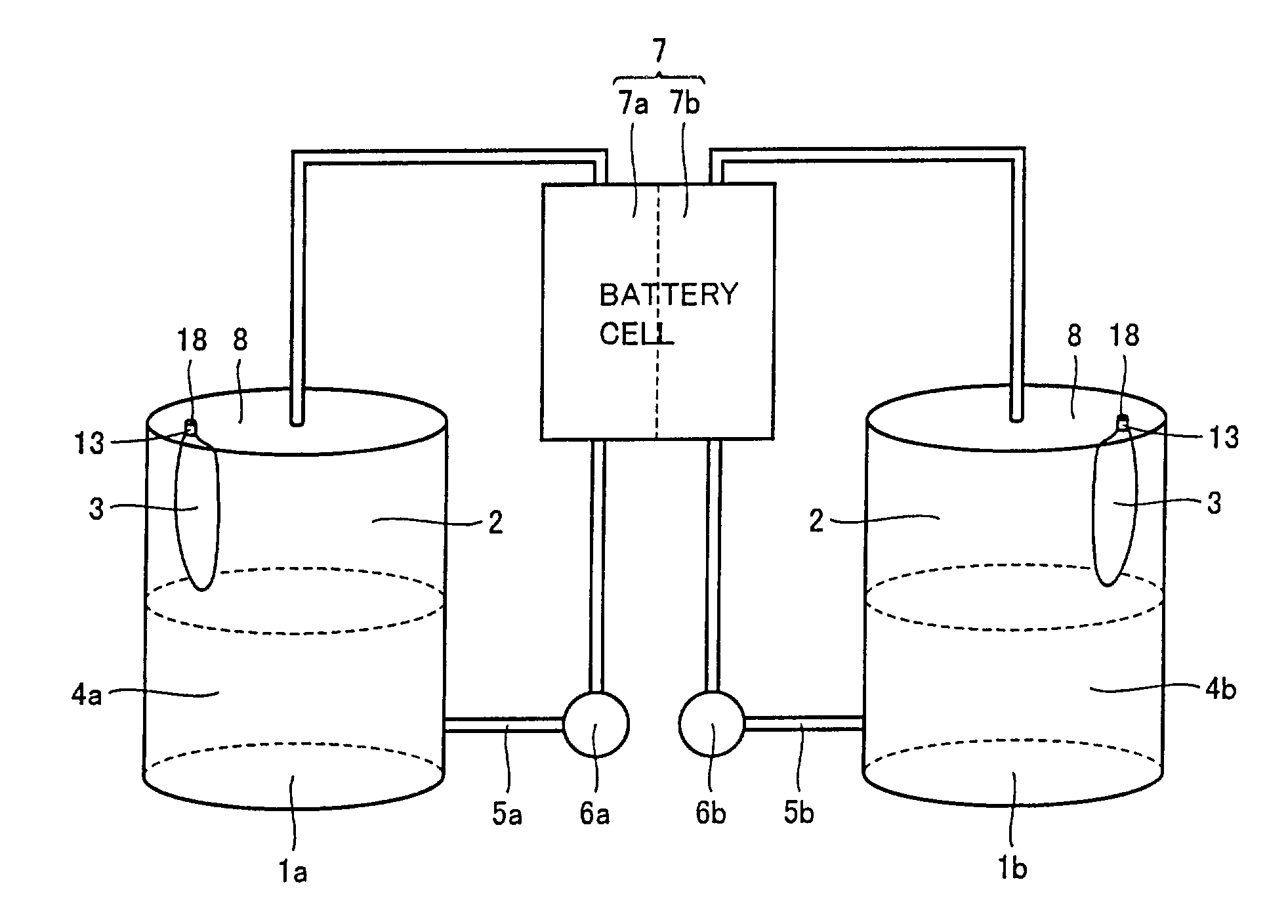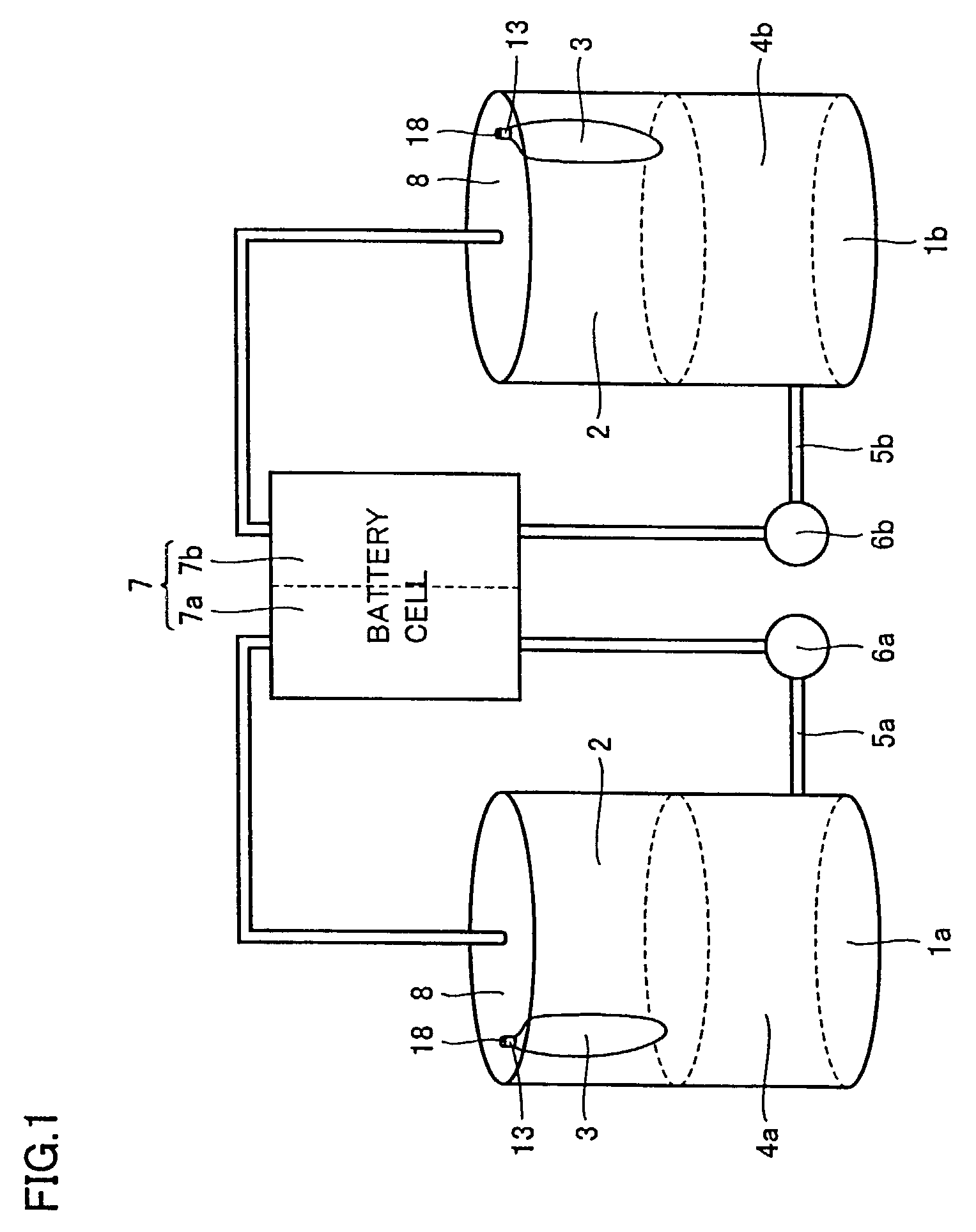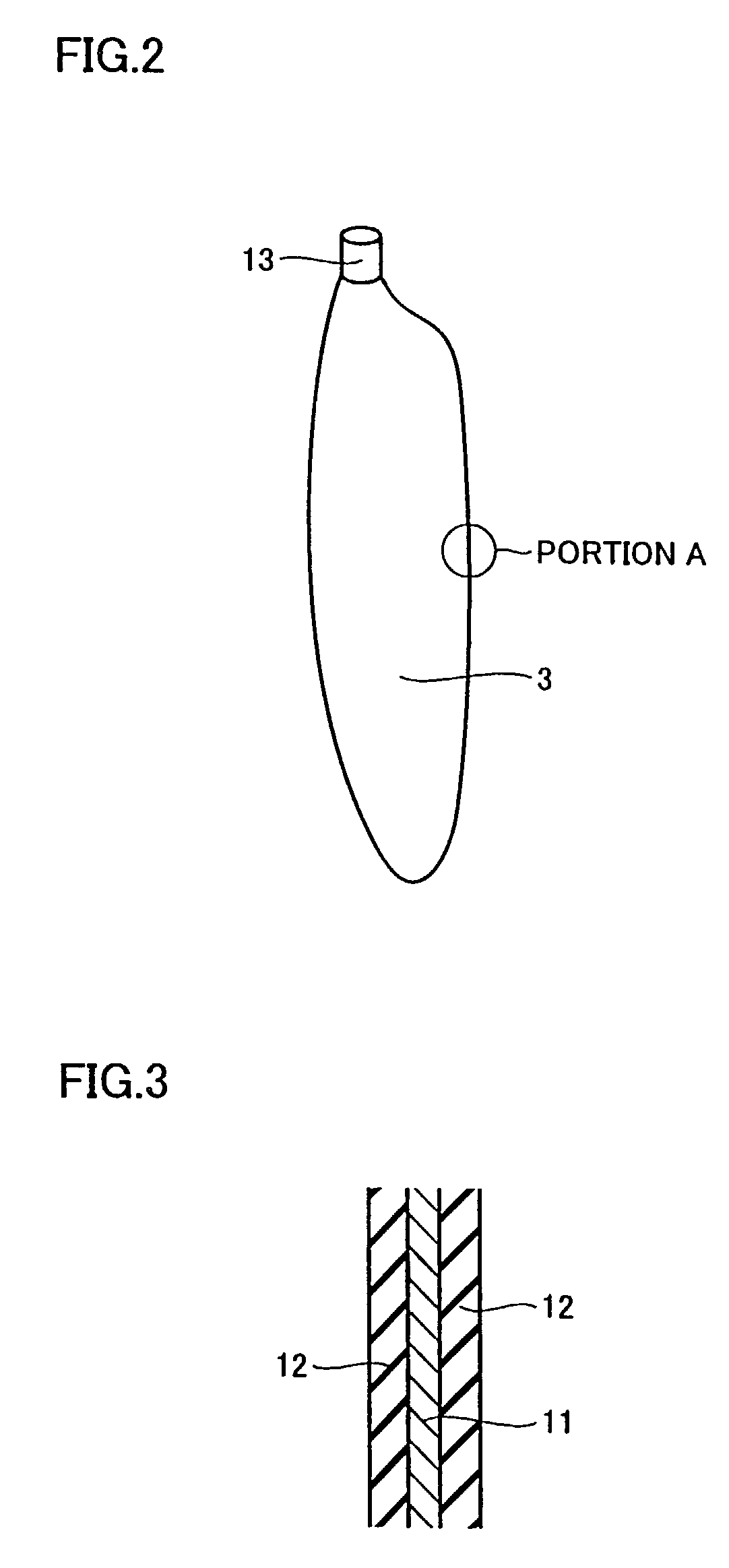Pressure fluctuation prevention tank structure, electrolyte circulation type secondary battery, and redox flow type secondary battery
a technology of pressure fluctuation and tank structure, which is applied in the direction of indirect fuel cells, non-aqueous electrolyte cells, cell components, etc., can solve the problems of increasing boosting up the cost of the entire battery system, and the inability to implement a tank structure so rigid that it can withstand. , to achieve the effect of preventing a pressure variation
- Summary
- Abstract
- Description
- Claims
- Application Information
AI Technical Summary
Benefits of technology
Problems solved by technology
Method used
Image
Examples
first embodiment
[0032](First Embodiment)
[0033]First, a first embodiment in which a pressure-variation preventing tank structure of the present invention is applied to a redox flow secondary battery will be described. Referring to FIG. 1, in a battery cell 7 of a redox flow secondary battery, positive electrolyte 4a is circulated in a positive electrode cell 7a and negative electrolyte 4b is circulated in a negative electrode cell 7b. A positive electrolyte pump 6a and a negative electrolyte pump 6b are respectively used to circulate positive electrolyte 4a and negative electrolyte 4b. The pressure-variation preventing tank structure of the present invention is used for both of the electrolyte tanks no matter whether it is positive or negative, and therefore in the following the same description will be made for both of the positive and negative electrolytes. The electrolyte tank is a polyethylene tank in both the positive and negative electrolyte tanks. It is noted that the positive electrolyte is ...
second embodiment
[0041](Second Embodiment)
[0042]FIG. 7 shows the pressure-variation preventing tank structure in accordance with a second embodiment of the present invention. Two breather bags 3 are attached to one polyethylene tank 1. The above noted manhole 21 is provided with a vent 22 having a valve 23, and flange portion 13 of the breather bag is attached to manhole 21 by welding to communicate with outside air through vent 22.
[0043]As illustrated in the first embodiment, if the volume of the gas phase portion is 15 m3 and temperature change ΔT=32° C., approximately, volume change ΔV of about 10%, that is, about 1.5 m3 is necessary. When a breather bag having a volume of about 1 m3 is formed of the three-layered composite material shown in FIG. 3, the weight thereof is not more than 5 kgf. This weight affords its attachment to manhole 21. As shown in FIG. 7, provision of two breather bags can assure a volume change of about 10% of the volume of the gas phase portion. Depending on the magnitude ...
PUM
| Property | Measurement | Unit |
|---|---|---|
| temperature | aaaaa | aaaaa |
| temperature | aaaaa | aaaaa |
| pressure | aaaaa | aaaaa |
Abstract
Description
Claims
Application Information
 Login to View More
Login to View More - R&D
- Intellectual Property
- Life Sciences
- Materials
- Tech Scout
- Unparalleled Data Quality
- Higher Quality Content
- 60% Fewer Hallucinations
Browse by: Latest US Patents, China's latest patents, Technical Efficacy Thesaurus, Application Domain, Technology Topic, Popular Technical Reports.
© 2025 PatSnap. All rights reserved.Legal|Privacy policy|Modern Slavery Act Transparency Statement|Sitemap|About US| Contact US: help@patsnap.com



